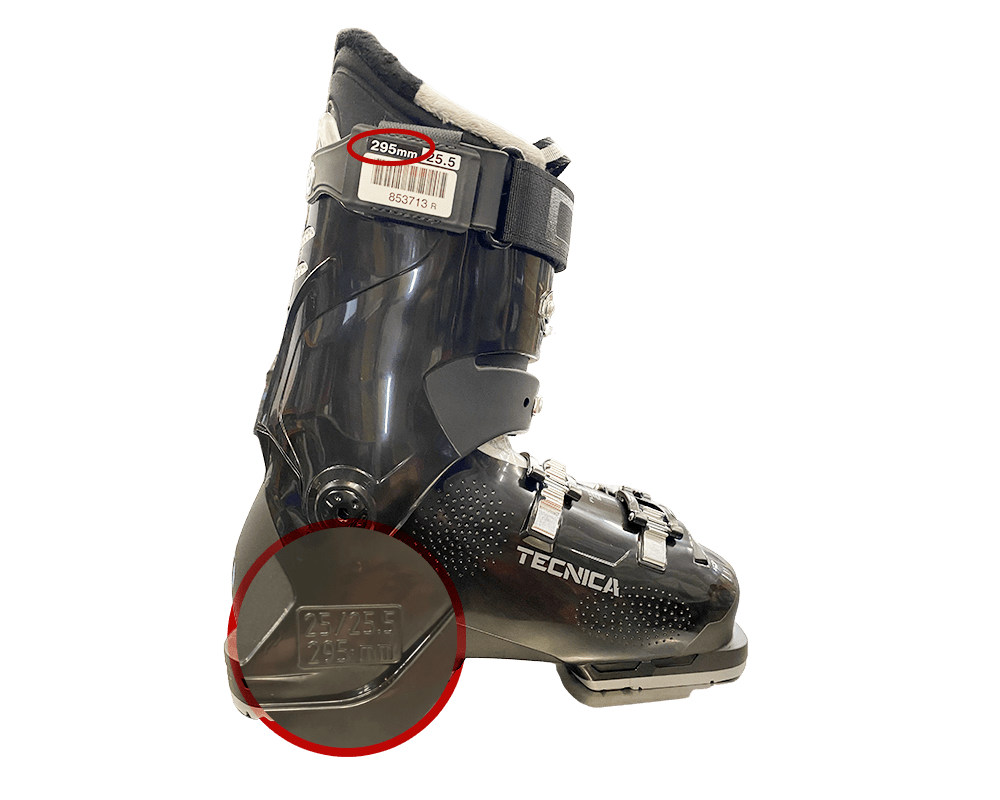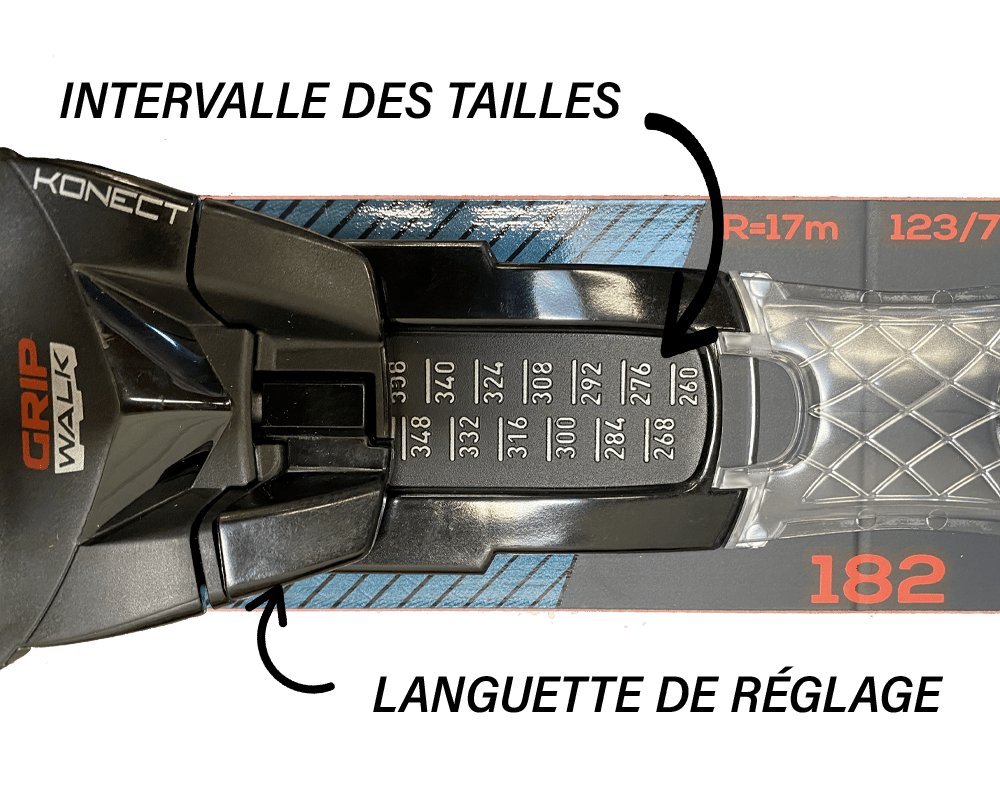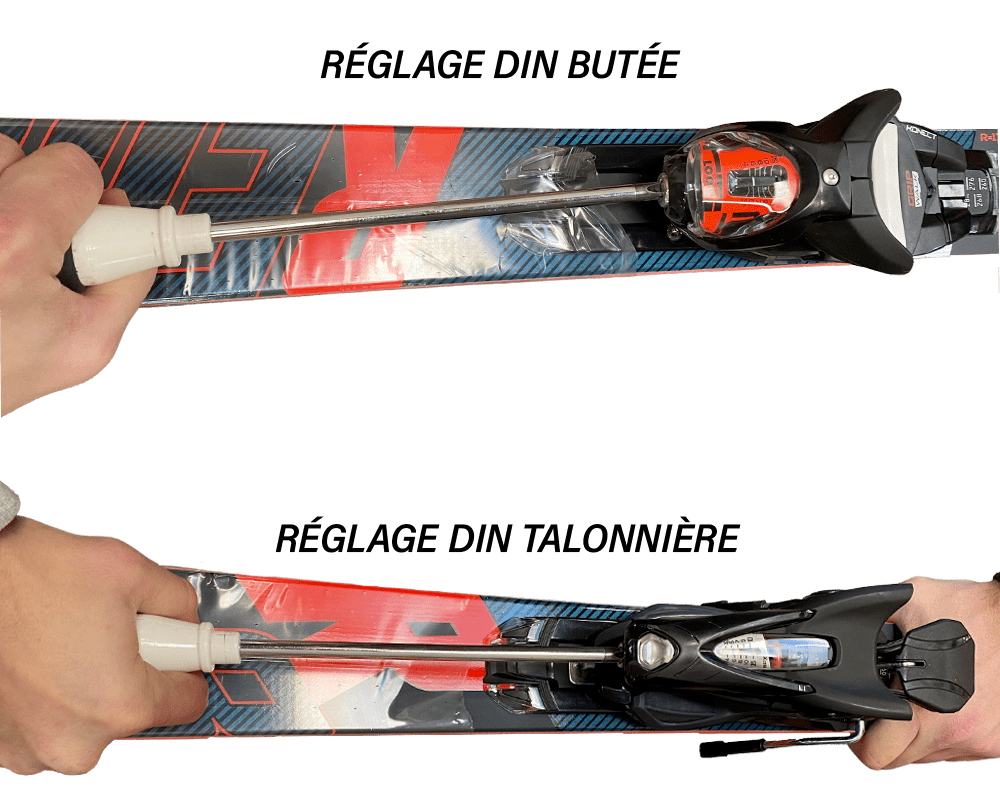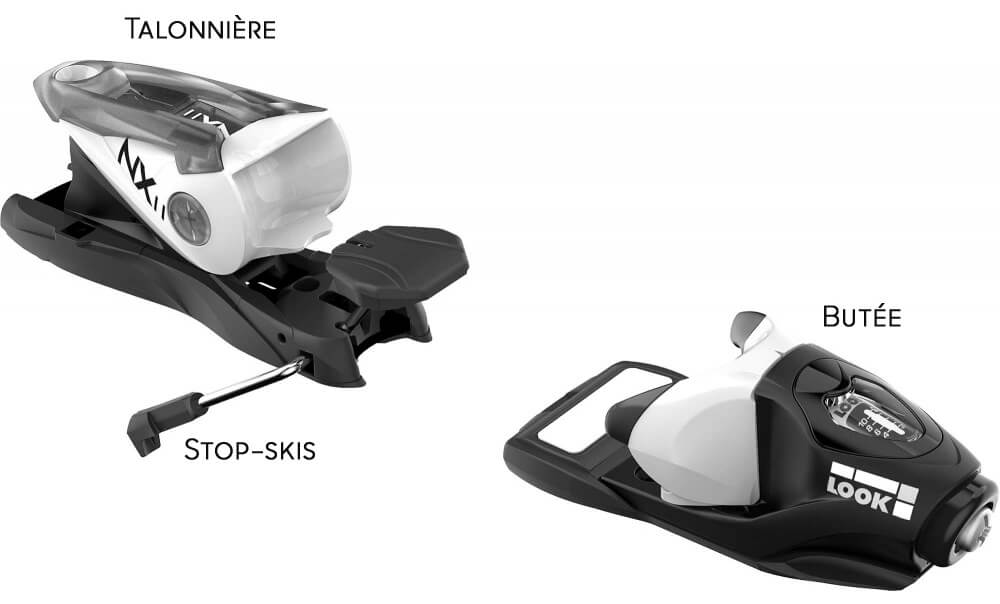
A well-adjusted ski binding allows you to anticipate the release of the bindings in the event of a fall , and therefore reduces the risk of injury. But a good adjustment of the ski bindings also allows for better power transmission between the skier and their equipment and therefore maximizes the pleasure of skiing and performance. Poorly adjusted, the bindings could come off at the first turns and send you hurtling down the slope flat on your stomach! Or conversely, you could never take your bindings off and injure yourself in a fall.
Two steps are essential for the correct adjustment of the bindings: the adjustment position and the adjustment of the bindings according to the skier's profile. It is therefore essential to gather several pieces of information about the skier before starting to adjust the bindings:



First step, adjusting the length and thrust.
Two distinct parts make up a ski binding, and on each of them you can find adjustment indicators:
First, you just need to adjust (using the tabs) the toe and the heel piece. Lift the tab and slide the toe piece until it reaches the number range in which your size is located , then do the same for the heel piece.
Check your adjustment! Your ski boot should fit perfectly into the ski binding! Insert the front of the boot then the back, with a little pressure the boot should fit easily, and both ends should be locked into the binding!
This is an important step because it determines the binding's release threshold. Once again, your safety is paramount, and a binding that is set too loosely causes it to release too frequently, just as setting it too tight prevents it from coming off and therefore increases the risk of injury! For optimal adjustment, let's review the criteria necessary for adjusting your bindings: the skier's weight, height, age, skiing level, and practice.
To adjust your binding, locate the graduations on the toe piece of your binding. The values correspond to the release value (the higher the number, the less easy it will be to release your binding). Below is a summary table of adjustments based on weight, size, and skiing level!
Use a screwdriver to lower or increase the graduation according to the values shown in the table above . Do this on the toe piece but also on the heel piece of your binding!

| Skier Settings | Sole length (mm) | ||||||||
|---|---|---|---|---|---|---|---|---|---|
| Weight (kg) | Height (m) | ≤ 230 | 231–250 | 251–270 | 271–290 | 291–310 | 311–330 | 331–350 | ≥ 351 |
| 10–13 | — | 0.75 | 0.75 | 0.75 | 0.75 | ||||
| 14–17 | — | 1 | 0.75 | 0.75 | 0.75 | ||||
| 18–21 | — | 1.5 | 1.25 | 1.25 | 1 | ||||
| 22–25 | — | 2 | 1.75 | 1.5 | 1.5 | 1.25 | |||
| 26–30 | — | 2.5 | 2.25 | 2 | 1.75 | 1.5 | 1.5 | ||
| 31–35 | — | 3 | 2.75 | 2.5 | 2.25 | 2 | 1.75 | 1.75 | |
| 36–41 | — | 3.5 | 3 | 3 | 2.75 | 2.5 | 2.25 | 2 | |
| 42–48 | ≤ 1.48 | 3.5 | 3 | 3 | 2.75 | 2.5 | |||
| 49–57 | 1.49–1.57 | 4.5 | 4 | 3.5 | 3.5 | 3 | 3 | ||
| 58–66 | 1.58–1.66 | 5.5 | 5 | 4.5 | 4 | 3.5 | 3 | 3 | |
| 67–78 | 1.67–1.78 | 6.5 | 6 | 5.5 | 5 | 4.5 | 4 | ||
| 79–94 | 1.79–1.94 | 7.5 | 7 | 6.5 | 6 | 5.5 | 5 | 5 | |
| ≥ 95 | ≥ 1.95 | 8.5 | 8 | 7 | 6.5 | 6 | 6 | ||
| — | — | 10 | 9.5 | 8.5 | 8 | 7.5 | — | — | — |
| — | — | 11.5 | 11 | 10 | 9.5 | 9 | — | — | — |
| — | — | 12 | 11 | 10.5 | — | — | — | — | — |
Note: If mass and height are not on the same line, choose the highest line in the table.
| Kind | ≤ 10 years | 11 to 49 years old | ≥ 50 years old |
|---|---|---|---|
| 1 (beginner / cautious) | +1 | 0 | +1 |
| 2 (intermediate) | 0 | 0 | 0 |
| 3 (fast/aggressive) | -1 | -1 | -2 |
Key (corrections): −2 = move down two lines in the large table • −1 = move down one line • 0 = no correction • +1 = move up one line.
When you buy a pair of skis from Ski Occas, we offer free ski binding assembly! All you need to do is send us the necessary adjustment data and you will receive your skis adjusted and ready to hit the slopes.
If you have any doubts, or are unable to adjust your skis at home, do not hesitate to ask us for advice in one of our Precision Ski, Ski Republic or Freeride stores.
| Kind | Description |
|---|---|
| TYPE 1 | Beginner (less than 7 days of skiing) and cautious skier on gentle to moderate slopes (blue/green). |
| TYPE 2 | Intermediate skier, not classified as Type 1 or Type 3. |
| TYPE 3 | Fast, aggressive skier, skiing on moderate to steep slopes (red/black). |
| Kind | ≤ 10 years | 11 to 49 years old | ≥ 50 years old |
|---|---|---|---|
| 1 (beginner / cautious) | +1 | 0 | +1 |
| 2 (intermediate) | 0 | 0 | 0 |
| 3 (fast/aggressive) | -1 | -1 | -2 |
Save products on your wishlist to buy them later or share with your friends.